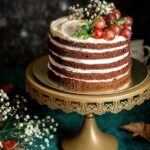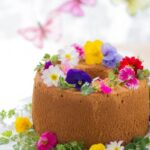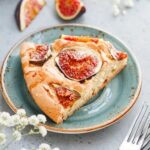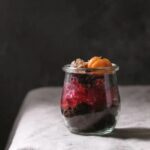Are you looking to add a professional touch to your cake decorating skills? If so, learning how to airbrush cake decorating can take your creations to the next level. Whether you’re a beginner or an experienced baker, airbrushing can unleash your creativity and elevate the visual appeal of your cakes.
In this article, we will delve into the art of airbrush cake decorating, covering everything from the basics of airbrush equipment and supplies to advanced techniques for achieving stunning results. We will also provide valuable tips and tricks, as well as common mistakes to avoid in order to help you perfect your airbrushing skills.
By the end of this article, you’ll have the knowledge and inspiration needed to create beautifully decorated cakes that are sure to impress both friends and clients. So let’s get started on our journey into the world of airbrush cake decorating, where color and creativity come together to make delicious works of art.
Understanding the Basics of Airbrush Equipment and Supplies
Airbrush cake decorating has become increasingly popular in the world of baking and pastry arts. One of the most important aspects of mastering this technique is understanding the basics of airbrush equipment and supplies. Whether you are a beginner or looking to improve your skills, having a good grasp of the tools and materials involved is essential for creating stunning cake designs.
The first step in learning how to airbrush cake decorating is familiarizing yourself with the different types of airbrush equipment available. There are two main types: single-action and double-action airbrushes.
Single-action airbrushes release a constant flow of color when the trigger is pressed, while double-action airbrushes allow for more control over the airflow and color application. Additionally, compressor selection is crucial as it provides the necessary pressure to propel the color from the airbrush onto the cake.
Once you have chosen your airbrush equipment, it’s important to consider the type of colors and supplies needed for achieving your desired effects. Airbrush colors come in various forms, including water-based, alcohol-based, and pearlized options.
It’s essential to select colors that are specifically designed for use in food decoration to ensure safety and quality. Furthermore, investing in stencils, masking materials, and cleaning tools will enhance your ability to create intricate designs while maintaining cleanliness throughout the process.
| Airbrush Equipment | Types |
|---|---|
| Airbrush Types | Single-Action and Double-Action |
| Compressor Selection | Provides necessary pressure for color application |
| Airbrush Supplies | Colors, stencils, masking materials, cleaning tools |
Choosing the Right Airbrush Colors and Techniques
When it comes to airbrush cake decorating, choosing the right colors and techniques is crucial to achieving professional results. Airbrush colors are specially formulated for use on cakes and other edible treats, ensuring that they are safe for consumption. These colors come in a wide range of shades, including metallics and shimmering finishes, allowing you to create stunning and eye-catching designs on your cakes.
Before selecting your airbrush colors, consider the theme and color scheme of the cake you will be decorating. For example, if you are creating a birthday cake with a tropical theme, you may want to choose vibrant shades of blue, green, and yellow to represent the ocean and exotic flora. Additionally, take into account any specific requests or preferences from your client if you are decorating a cake for an event or celebration.
In terms of techniques, there are various ways to apply airbrush colors onto a cake. Whether you want to achieve a smooth gradient effect or add intricate details with stencils, mastering different airbrush techniques can elevate the overall look of your cake design. Experimenting with different pressures, distances from the cake surface, and angles of application can help you create unique textures and visual effects that will impress your clients and guests.
To make sure that you have all the necessary information at hand when choosing the right airbrush colors for your next cake decorating project we recommend:
- Researching different color options available in the market
- Create a color palette based on themes or occasions
- Practicing various airbrush techniques using different colors
Preparing Your Cake for Airbrushing
When it comes to airbrush cake decorating, the preparation of your cake is crucial to achieving professional results. Here are some important steps to consider when preparing your cake for airbrushing:
- Smooth Surface: Before you start airbrushing, make sure that the surface of your cake is smooth and free from any imperfections. Use a good quality frosting or fondant to create a flawless base for your design.
- Chilling the Cake: It’s essential to chill your cake before airbrushing to ensure that the frosting or fondant is firm and won’t get damaged during the process. Place the cake in the refrigerator for at least 30 minutes before you begin airbrushing.
- Protecting Your Work Area: Cover the surrounding area with parchment paper or a clean cloth to prevent overspray from getting on other surfaces. This will help keep your work area clean and make cleanup easier.
Once you have prepared your cake accordingly, it’s time to move on to the actual process of airbrushing. Remember that proper preparation is key to achieving professional-looking results in your airbrush cake decorating endeavors.
Step-by-Step Guide to Airbrushing Techniques
Now that you have prepared your cake for airbrushing, it’s time to learn how to actually use the airbrush equipment to decorate your cake.
- Assemble Your Airbrush Kit: Make sure that you have all the necessary equipment and supplies ready, including the airbrush gun, compressor, colors, and stencils if desired.
- Mix Your Colors: Prepare the colors you want to use by diluting them with a suitable liquid (such as clear alcohol or water) according to the instructions provided with your specific airbrush colors.
- Practice Control: Before applying color to your cake, practice controlling the airflow and pressure of the airbrush on a test surface. This will help you get a feel for how much pressure and distance is needed for different effects.
Step-by-Step Guide to Airbrushing Techniques
Setting Up Your Airbrush Equipment
Before you begin airbrushing your cake, it’s important to set up your airbrush equipment properly. Start by connecting the air compressor to the airbrush gun and ensuring that the air pressure is adjusted to the recommended level for cake decorating.
Next, fill the reservoir of the airbrush gun with your chosen color of food coloring. Test the spray of the airbrush on a piece of paper or paper towel to ensure that it is spraying evenly and at the desired intensity.
Applying the Base Coat
Once your equipment is set up, it’s time to start airbrushing your cake. Begin by applying a base coat of color to the entire surface of the cake. Hold the airbrush gun at a consistent distance from the cake, usually around 6-8 inches, and move in smooth, even strokes. Start with lighter colors as a base and gradually build up to darker shades if needed.
Creating Dimension and Details
After applying the base coat, you can use different techniques with the airbrush to add dimension and details to your cake design. For example, you can use stencils to create intricate patterns or designs on the cake surface. Layering different colors or using varying levels of pressure with the airbrush can also help create depth and texture in your decorations.
By following these step-by-step techniques for airbrushing cakes, you can achieve professional-looking results that will impress any recipient. Experiment with different colors, stencils, and techniques to develop your own unique style and take your cake decorating skills to the next level.
Tips and Tricks for Achieving Professional Results
Airbrushing cake decorating can be a fun and creative way to make your cakes stand out. To achieve professional results, it’s important to understand the tips and tricks of using an airbrush for cake decorating.
Here are some helpful tips and tricks for achieving professional results with airbrush cake decorating:
1. Use the right consistency: When using airbrush colors, it’s important to achieve the right consistency to prevent clogging and ensure a smooth application. Make sure to follow the manufacturer’s instructions and practice on a test surface before airbrushing your cake.
2. Practice control: Controlling the airflow and paint flow is essential in achieving professional results with airbrushing. Practice controlling the trigger of the airbrush to create fine lines, gradients, and even coverage on your cake.
3. Layering techniques: Achieve depth and dimension in your airbrushed designs by using layering techniques. Start with lighter colors as a base and gradually add darker colors to create shadows and highlights on your cake.
4. Stencil use: Stencils can be used to create intricate patterns, textures, or designs on your cakes with an airbrush. Secure the stencil firmly in place and apply light layers of color to avoid bleeding or smudging.
5. Clean your equipment: Proper maintenance of your airbrush equipment is crucial for achieving professional results. Regularly clean your airbrush after each use, especially when switching between colors, to prevent clogging and ensure consistent performance.
By following these tips and tricks, you can master the art of airbrush cake decorating and achieve professional-looking results on your cakes.
Common Mistakes to Avoid in Airbrush Cake Decorating
When it comes to airbrush cake decorating, there are a few common mistakes that beginners often make. Avoiding these mistakes can help you achieve professional-looking results and create stunning designs. One of the most common mistakes is not properly preparing the cake for airbrushing. Before you start, make sure your cake is completely cooled and that any frosting or icing is set. This will ensure that the colors adhere to the surface without running or bleeding.
Another mistake to avoid is using too much air pressure when airbrushing. High pressure can cause the colors to spray unevenly and create a splotchy, messy appearance. It’s important to practice controlling the airflow and finding the right pressure for smooth and consistent coverage.
Additionally, not cleaning your airbrush equipment thoroughly after each use can lead to clogs and inconsistent color application. Make sure to carefully clean your airbrush gun, nozzle, and cup with warm water and specialized cleaning solutions designed for airbrush equipment.
By being mindful of these common mistakes and taking the time to learn proper techniques, you can enhance your airbrush cake decorating skills and create beautifully decorated confections for any occasion. With practice and patience, you’ll be able to avoid these pitfalls and achieve professional-looking results every time you use airbrush techniques in your cake decorating projects.
Advanced Airbrush Techniques for Cake Decorating
Creating 3D Effects
One of the advanced techniques in airbrush cake decorating is creating 3D effects on your cakes. This involves using shading and highlighting to give the illusion of depth and dimension. To achieve this, you can use different shades of the same color to create shadow and light areas on your cake. By carefully layering these shades with your airbrush, you can make certain elements of your design appear raised or recessed.
Airbrush Stenciling
Another advanced technique that can take your cake decorating to the next level is airbrush stenciling. Stencils allow you to create intricate designs and patterns on your cakes with precision and ease. You can use pre-made stencils or create your own custom designs to personalize your cakes. By using a combination of different stencils and colors, you can achieve stunning results that are sure to impress.
Color Blending and Gradient Effects
Mastering the art of color blending and gradient effects with your airbrush can elevate the look of your cakes. This technique involves seamlessly blending different colors together to create smooth transitions and gradients on your cake surface. With practice and patience, you can achieve beautiful ombre effects or realistic color blends that will make your cake designs stand out.
By incorporating these advanced airbrush techniques into your cake decorating repertoire, you can take your creations to new heights. With dedication and practice, you will be able to produce professional-looking cakes that showcase your skills in airbrushing.
Conclusion and Inspiration for Your Next Airbrush Cake Design
In conclusion, airbrush cake decorating is a fun and creative way to add stunning designs and vibrant colors to your cakes. With the right equipment, supplies, and techniques, you can elevate your cake decorating skills and create professional-looking designs.
By understanding the basics of airbrush equipment and choosing the right colors and techniques, you can achieve impressive results. It’s important to prepare your cake properly for airbrushing and follow a step-by-step guide to ensure even coverage and precise designs. Additionally, incorporating tips and tricks from experienced decorators can help you avoid common mistakes and achieve professional results.
As you continue to practice and refine your airbrushing skills, don’t be afraid to explore advanced techniques for more intricate designs. Whether you’re creating beautiful gradients, intricate stenciled patterns, or realistic textures, the possibilities for airbrush cake decorating are endless.
Overall, airbrush cake decorating opens up a world of creativity and inspiration for your next cake design. With dedication and practice, you can master this technique and create stunning works of edible art that will impress anyone who sees (and tastes) your beautifully decorated cakes. So go ahead – unleash your creativity and take your cake decorating skills to the next level with how to airbrush cake decorating.
Frequently Asked Questions
Can I Use Regular Food Coloring in My Airbrush?
Using regular food coloring in an airbrush can potentially clog the machine and cause problems. It’s best to use airbrush food colors specifically designed for this purpose to ensure smooth operation and vibrant results.
Can You Airbrush on Buttercream?
Yes, you can definitely airbrush on buttercream. It’s important to make sure the buttercream has crusted before airbrushing to avoid any bleeding or smudging. But overall, it is a great surface for airbrushing.
What Is the Best Frosting for Airbrushing?
The best frosting for airbrushing is typically one with a smooth and slightly firm consistency, such as Swiss meringue buttercream or ganache. These frostings provide a good base for the colors to adhere to and create a beautiful, even finish when airbrushed.

Welcome to my blog about home and family. This blog is a place where I will share my thoughts, ideas, and experiences related to these important topics. I am a stay-at-home mom with two young children. I hope you enjoy reading it! and may find some helpful tips and ideas that will make your home and family life even better!





